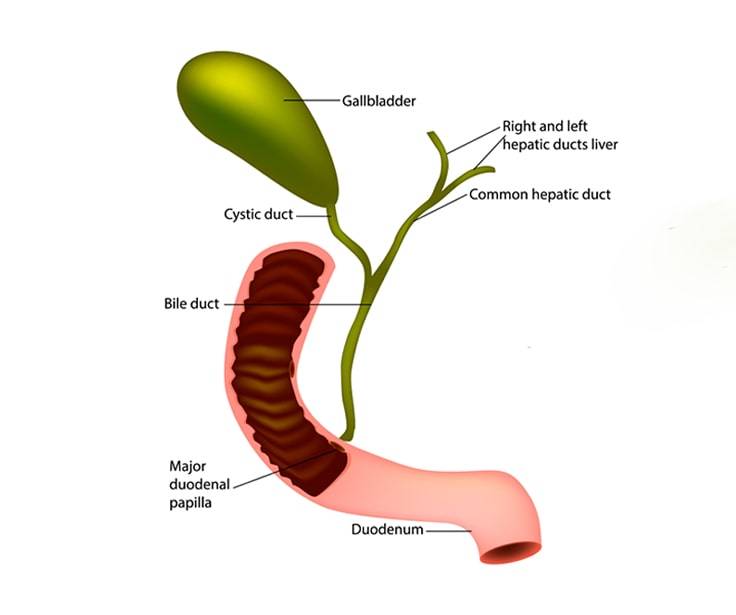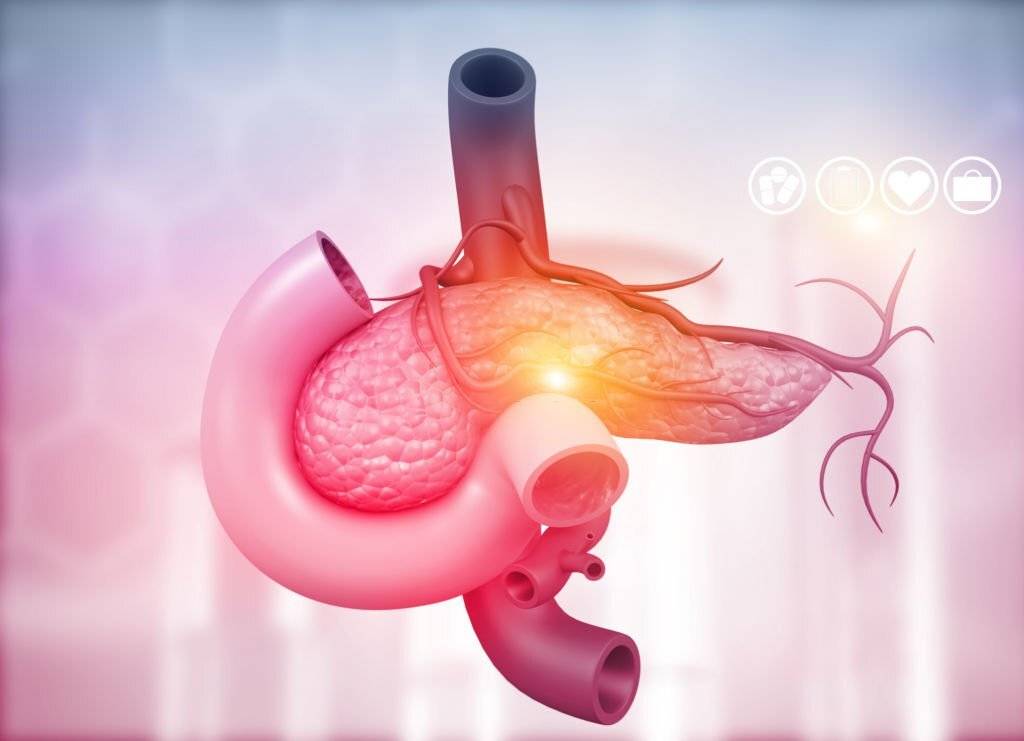
Hepato-Pancreato-Biliary Surgeon in Kolkata
What is Gallbladder Cancer?
If malignant cells develop in the gallbladder, you have gallbladder carcinoma. Gallbladder cancer can remain in the primary location of your gallbladder or spread to other areas of your body. Gallbladder cancer is more common in those who are older and of certain ethnicities. The earlier the cancer is diagnosed, the lower the survival rates. Dr. Azhar is known for the best Hepato Pancreato Biliary Doctor in Kolkata.
How to treat gallbladder cancer?
Gallbladder cancer is when malignant (cancerous) cells grow within your gallbladder. It is a pear-shaped organ that lies under your liver and in your upper abdomen.
There are four layers of tissue that make up the outside of your gallbladder.
The inner layer (mucosal)
The muscle layer.
The connective tissue layer.
The outer layer (serosal)
Gallbladder cancer starts in the mucosal layer, and then spreads outward. It’s often discovered by chance following gallbladder surgery, or not until the disease has advanced to a more serious stage.
Gallbladder Carcinoma

What are the signs and symptoms of gallbladder carcinoma?
If you have ever had a stomach infection from bacteria Helicobacter Pylori (also known as H. Pylori), your chances of developing stomach cancer are greater. This can lead to stomach ulcers. If you do this, your chances of getting stomach cancer are higher.
What are the treatment of Hydatid Cysts in the Liver ?
Hydatid diseases in humans are mainly caused due to infection with the larval stage Echinococcus Granulosus, a dog tapeworm. After ingestion of the tapeworm eggs from infected dogs, it is a serious parasitic, pathogenic and zoonotic infection. Hydatid diseases are a serious endemic problem in some parts of the world.
Cystic hydatid diseases usually affect the liver (50 to 70%), but less often the spleen and kidneys, as well as the bones and brain. After a cyst ruptures in the peritoneum, biliary tract, liver hydatidosis may cause anaphylaxis or dissemination. The cyst infection can lead to liver abscesses, as well as other complications such a mass effect on the bile ducts, vessels, and cholestasis.
The treatment of hydatid cysts of the liver must be done in cases of symptomatic or severe cysts. Modern treatment options for hydatid cysts of the liver include percutaneous drainage, surgical intervention, and medical therapy. The conventional approach or laparoscopic surgery is the best option.
Bile Duct Stones
What is Bile Duct Stones?
Bile duct stones can be gallstones found in the bile. They can originate in the gallbladder, migrate into the bile canal, or form within the bile conduit itself. Blockages can occur when the stones become lodged in the gallbladder. Our multidisciplinary team at the University of Michigan’s Division of Gastroenterology offers the most recent in minimally invasive treatments to treat bile duct stone. These procedures are rare and only available by highly experienced gastroenterologists who have extensive experience in them. The gallstones and the bile duct stone (also known by choledocholithiasis), are identical, but they are located in different parts of the body. Stones can pass out of the bile drain on their own. If a stone becomes stuck in the bile conduit, it is possible for severe organ damage or inflammation to occur.
What are the symptoms of Bile Duct Stones?
There are often no symptoms for bile-duct stones until the stone blocks the bile passage. These symptoms may include:
Severe abdominal pain that can be irregular and lasting for hours.
Nausea
Vomiting
Fever
Jaundice
What is Choledochal Cysts?
Choledochal cysts can be congenital bile-duct anomalies. Cystic dilatations can occur in the biliary tree by either the extrahepatic or intrahepatic-biliary radiocles.
Bile duct stricture
What is Bile duct stricture?
A bile stricture refers to an abnormal narrowing in the common bile conduit. This tube moves bile from liver to small intestine.
What causes Bile duct stricture?
An injury to the bile drains during surgery can often cause a bile-duct stricture. It can happen after surgery to remove the gallbladder.
This condition can also be caused by:
Cancer of the liver, bile duct or pancreas
Gallstones in the bile tube can cause damage and scarring.
Gallbladder removal can cause damage or scarring.
Pancreatitis
Primary sclerosing Cholangitis

Bile duct cancer
What is Bile Duct Cancer?
Cholangiocarcinoma (also known as bile-duct cancer) is a form of bile duct cancer. It is important to understand the normal functions of the bile and bile ducts in order to understand this type of cancer.
What are the types and grades of Bile duct cancer?
Types of bile-duct cancers according to location
Cholangiocarcinoma (bile duct cancer) can develop in any part or system of the bile. They can be divided into three types based on the location of the cancers (see the image below).
Intrahepatic bile duct cancers: These cancers begin in the smaller branches of the bile duct within the liver. They can sometimes be confused with cancers of the liver cells (hepatocellular tumors), and are often treated in the same way.
Perihilar bile duct cancers: Perihilar also known as hilar, is a bile duct cancer. These cancers begin at the hilum. This is where the left and the right hepatic drains join and leave the liver. Klatskin tumors are also known. These cancers can be grouped together with distal bile-duct cancers and extrahepatic liver duct cancers.
Distal bile duct cancers: These cancers can be found further down the bile tube, nearer the small intestine. These cancers are also called extrahepaticbile duct cancers. They start outside the liver, just like perihilar.
Chronic Pancreatitis
What is Chronic Pancreatitis?
Chronic pancreatitis refers to inflammation of the pancreas that does not improve over time.
The pancreas, which is located behind your stomach, is an organ that makes enzymes. It also produces hormones, which control how much sugar your bloodstream has.
Pancreatitis is when your pancreas becomes inflamed. When the inflammation is sudden and lasts only a few days, it’s called acute pancreatitis. Chronic inflammation is when the inflammation continues to return or doesn’t heal within a few months or years.
Chronic pancreatitis can cause permanent scarring and damage. Your pancreas can develop calcium stones and cysts that can cause damage and permanent scarring. This can cause your body to have difficulty digesting food and regulate blood sugar. This could lead to serious health issues, such as diabetes and malnutrition.
What causes Chronic Pancreatitis?
There are many causes of chronic pancreatitis. About 70% of all cases can be attributed to alcohol abuse.
When your body attacks healthy cells or tissues, it is called autoimmune disease. Inflammatory bowel syndrome is an inflammation of the digestive system. Primary biliary Cholangitis is a chronic liver disease that is associated with chronic pancreatitis.
There are also other causes:
Autoimmune disease is a condition in which your body attacks healthy cells and tissues.
A narrow pancreatic tube, which is the tube that transports enzymes from the pancreas into the small intestine.
A blockage of the pancreatic tube by gallstones or other pancreatic stones
Cystic Fibrosis is a hereditary condition that causes mucus buildup in the lungs.
Genetics
Hypercalcemia is characterized by high blood calcium levels.
Hypertriglyceridemia is a high blood level of triglyceride oils.
Pancreatic Cancer
What is pancreatic cancer?
Pancreatic cancer develops when changes (mutations) in pancreas cells cause them to grow out of control. A mass of tissue may result. In some cases, this tissue mass can be benign (not tumorous). However, in pancreatic cancer the mass may be considered to be malignant (cancerous).
What are the signs and symptoms that pancreatic cancer has?
A majority of people don’t show symptoms of pancreatic cancer in the beginning. As cancer progresses, individuals may experience:
✔ Upper abdominal discomfort that can radiate into the lower back.
✔ The skin is yellow along with the whites around the eyes ( jaundice).
✔ Tiredness.
✔ A loss of appetite.
✔ Light-colored poop.
✔ Dark-colored pee.
✔ Weight loss.
✔ Blood is a clot inside the body.
✔ Itchy skin.
✔ The condition is either getting worse or it’s now becoming more severe. diabetics.
✔ Nausea and vomiting
Consult with the best pancreatic cancer doctor in Kolkata, Dr. Azhar Alam may able to be suspicious of pancreatic cancer if exhibit any of the symptoms listed above and you’ve recently been diagnosed with diabetes or pancreatitis which is an uncomfortable condition caused by the inflammation of the pancreas.
The signs of pancreatic neuroendocrine cancer could be different from usual pancreatic cancer symptoms like jaundice or weight loss. It is because certain PNETs produce excessive levels of hormones.
What are the treatment option available to treat pancreatic cancer?
Treatment for pancreatic cancer depends on several factors, including the location of the tumor and the stage it’s in, health condition, and whether or not the cancer has spread to other parts of the pancreas. Options for treatment include
Removal by surgery: The cancerous part of the pancreas (resection) is removed. Lymph nodes in the pancreas can be removed as well. The operation to remove the pancreas or a portion of the pancreas can be referred to as the pancreatectomy. If the tumor is inside the head (the widest part of the pancreas that is near the small intestine) in the pancreas your physician may recommend an operation called the Whipple procedure. The procedure removes the pancreas’ head and the duodenum (the beginning of the small intestinal tract) as well as the gallbladder. part of the bile duct and lymph nodes that are located nearby.
Therapy for radiation: High-speed energy is used to kill cancerous cells.
Chemotherapy: This technique uses drugs to eliminate cancerous cells.
The treatment is known as immunotherapy: Treatment to aid the body combat cancer. Immunotherapy is largely unsuccessful against pancreatic cancer however, about one percent of those who have pancreatic cancer and an inherited genetic mutation could gain from this.
Targeted treatment: The term “targeted treatment” refers to It is targeted at specific proteins or genes that aid in preventing the growth of cancer. Genetic testing is typically the way to determine whether targeted therapy is suitable for you.
Trials in clinical research: Consult your doctor about whether taking part in a clinical study could be an alternative.
FAQ about Hepato Pancreato Biliary Surgery
What is HPB Oncology?
HPB Oncology is a multidisciplinary specialty in medicine that deals with cancers of the Liver and Gall Bladder.
What does a hepatobiliary specialist do?
Hepatobiliary surgery is a type of surgery that deals with the liver, bile and pancreas. The primary cancers of liver that the hepatobiliary surgeon treats include cholangiocarcinoma and hepatocellular carcinoma.
What is the purpose of hepatobiliary surgical intervention?
Hepatobiliary surgery significantly improves people’s ability to survive cancer. This surgery is also beneficial to those with other conditions of the liver, bile duct and gallbladder. These surgeries can save lives.
What are GI and HPB surgeries?
Upper GI surgery is a surgery that treats the upper gastrointestinal tract. The hepatobiliary (HPB), surgery is a specialty area of surgery that treats conditions of the liver and pancreas. The hepatobiliary group has specialist knowledge in managing liver, pancreatic, and biliary diseases.





